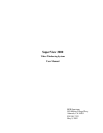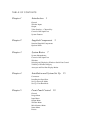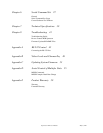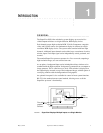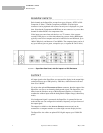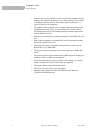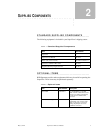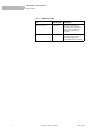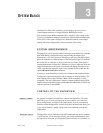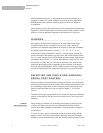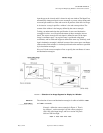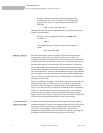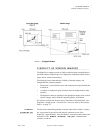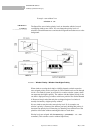
INTRODUCTION
Window Inputs
2 SuperView 3000 User Manual May 9, 2002
1
................................................
WINDOW INPUTS
Each channel on the SuperView accepts four types of inputs—NTSC or PAL
Composite, S-Video, Y P
B PR Component, and RGB. All of the input
connectors can be populated with sources but only one is displayed at a given
time. Note that the Component and RGB are on one connector so you use that
channel for either RGB or for component video.
Video inputs can come from such devices as a TV camera, video cassette
recorder, DVD player, or video teleconferencing system. Analog RGB inputs
typically come from a computer and can be interlaced or non-interlaced, up to
1600x1200 pixels, and between 15 and 90kHz. The computer inputs can be of
any sync format (sync on green, composite sync, or separate H- and V-drive).
FIGURE 2. SuperView Rear Panel, with Six Inputs in a 2RU Enclosure
................................................
OUTPUT
All input signals to the SuperView are converted for display in the output high-
resolution format, up to 1600 pixels by 1200 lines, with horizontal scan rates
from 15 to 100 kHz.
If you have the optional B
ACKGROUND INPUT connector, then the output of the
SuperView can sync to an incoming (background) signal. The SuperView can
either insert the windows on top of the background graphics, or selectively
combine the window inputs with the background computer image (chroma key
mode).
If no background signal is connected, the SuperView is operated in free-run
mode and the user can configure the resolution, frequency, and sync format of
the output signal.
The output is available on the A
NALOG OUTPUT connector and can be
connected to a computer monitor or to other high scan-rate display devices.
The SuperView also offers an optional DVI digital output, up to 1280x1024
pixels.



